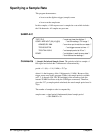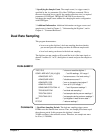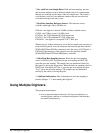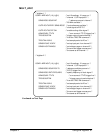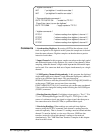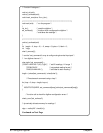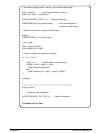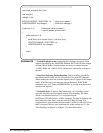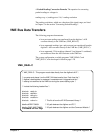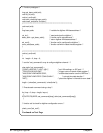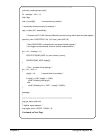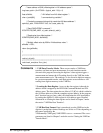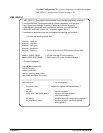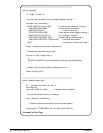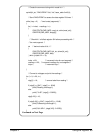
/****************************************************************************/
void check_error(char *func_tion)
{
char into[161];
intlength = 160;
IOOUTPUTS(ADDR, "SYST:ERR?", 9); /* Query error register */
IOENTERS(ADDR, into, &length); /* Enter error message */
if (atoi(into) != 0) /* Determine if error is present */
/* If errors present, print and exit */
{
while (atoi(into) != 0)
{
printf("Error %s in function %s\n\n", into, func_tion);
IOOUTPUTS(ADDR, "SYST:ERR?", 9);
IOENTERS(ADDR, into, &length);
}
exit(1);
}
}
Comments 1. Packed Reading Format. Packed digitizer readings are signed, 16-bit
numbers preceded by the ANSI/IEEE Standard 488.2-1987 Definite Length
Arbitrary Block header. Packed readings are always a number between
-1.0230 (-2046) and +1.0235 (2047), and must be converted to voltages by
the user.
2. Line Feed Following Packed Readings. Packed readings preceded by
the arbitrary block header are also followed by a line feed (LF) character.
When readings are retrieved from the digitizer, the LF remains in the output
buffer. If the line feed is not removed with an additional "IOENTERS"
statement, error -410 "Query INTERRUPTED" occurs the next time data is
read from the digitizer.
3. Channel Labels. A numeric label identifying a set of readings can be
specified using the four least significant bits of each reading. The label,
which is any number from 0 to 15, is assigned using the
DIAGnostic:CHANnel<chan >:LABel command. The label is included with
the reading bits when data is returned in the PACKed,16 format. The
assigned label is ignored when the data format is ASCii,9 or REAL,64. If no
label is assigned, the four least significant bits of the reading are ’0’s. See
"How Readings are Stored" in Chapter 3 for more information.
62 Usin
g
the Di
g
itizer Chapter 2



